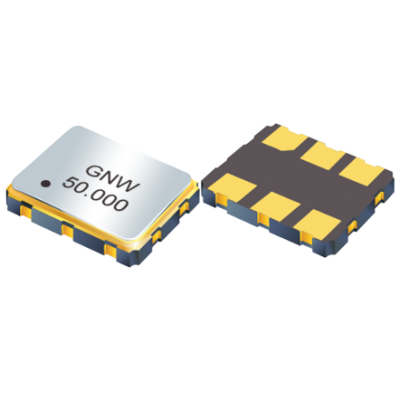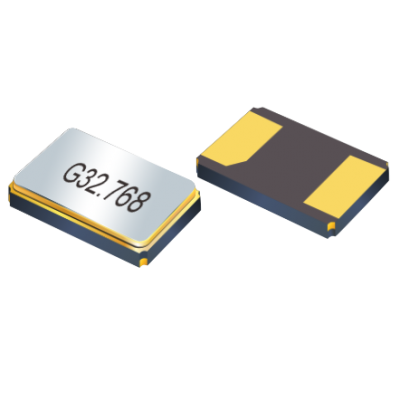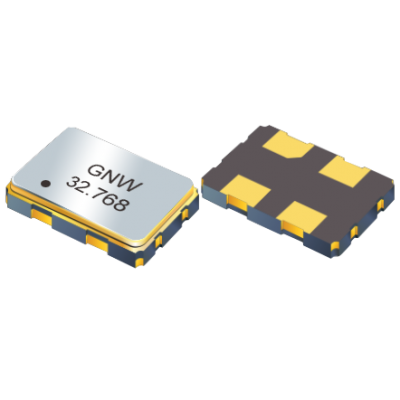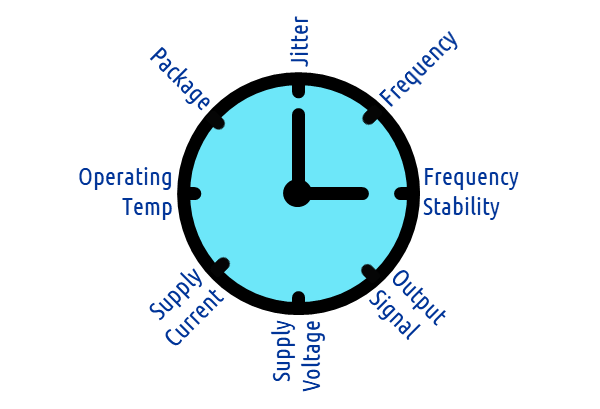
The 8 Most Important (and Fundamental) Oscillator Parameters 关于晶体振荡器的八个最基本电气参数
What is the first thing you think of when selecting electronic components? Chances are it’s the processor or something else central to the system. The timing component may be the last thing on your mind, even though the clock provides the heartbeat on which all signals in the system are dependent.
当你选择电子元器件时,首先想到的是什么呢?很可能是处理器或关乎系统核心的其他器件。定时器件可能是您想到的最后一件事,尽管时钟提供了系统中所有信号所依赖的心跳。
Selecting these essential timing components may appear to be a straightforward process, but there are a number of factors to consider that affect system performance. So what are the most important specifications and considerations?See the 8 most Important (and fundamental) oscillator parameters as listed below:
选择这些基本时序元件似乎是一个简单的过程,但需要考虑许多影响系统性能的因素。那么最重要的关于晶体振荡器的规格和注意事项是什么?详情如下:
![]() Frequency频率
Frequency频率
The most basic parameter for any oscillator is the frequency. It is the repetition rate (cycle) of the signal output from the oscillator and is measured in Hertz (Hz) per second.
任何振荡器最基本的参数是频率。它是振荡器输出的信号的重复率(周期),以每秒赫兹 (Hz) 为单位。
![]() Frequency Stability频率稳定性
Frequency Stability频率稳定性
Frequency stability is a fundamental performance specification for oscillators. It is typically expressed in parts per million (ppm) or parts per billion (ppb) which is referenced to the nominal output frequency. It represents the deviation of output frequency due to external conditions; therefore, a smaller stability number means better performance. The definition of external conditions can differ for different oscillator categories, but it usually includes temperature variation and initial offset at 25°C. It may also include frequency aging over time, solder down frequency shift, and may include electrical conditions such as supply voltage variation and output load variation.
频率稳定性是振荡器的基本性能规格。它通常以百万分之一 (ppm) 或十亿分之一 (ppb) 表示,以标称输出频率为参考。它表示由于外部条件引起的输出频率偏差;因此,稳定性数字越小意味着性能越好。对于不同的振荡器类别,外部条件的定义可能有所不同,但通常包括温度变化和25°C时的初始偏移。 它还可能包括随时间推移的频率老化、焊接频率偏移,并可能包括电气条件,例如电源电压变化和输出负载变化。
![]() Output Signal Format输出信号格式
Output Signal Format输出信号格式
Chipset vendors may specify the required output signal mode for timing chips. Output types fall into two categories: single-ended or differential. Single-ended oscillators are lower cost and easier to implement, but they have limitations. They are somewhat sensitive to board noise and are therefore typically better suited for frequencies below 166 MHz. CMOS is the most common single-ended output type.
芯片供应商可能会为定时芯片指定所需的输出信号模式。输出类型分为两类:单端或差分。单端振荡器成本更低,更易于实现,但它们也有局限性。它们对电路板噪声有些敏感,因此通常更适合低于166 MHz的频率。 CMOS是最常见的单端输出类型。
Differential signaling is a more expensive option, but it enables better performance and is preferred for higher frequency applications. Since any noise common to both differential traces will be zeroed out, this mode is less sensitive to external noise and it generates lower levels of jitter and EMI. The most commonly used differential signal types are LVDS, LVPECL,and HCSL.
差分信号是一种花费较高的选择,但它可以实现更好的性能,并且是更高频率应用的首选。由于两条差分走线共有的任何噪声都将归零,因此该模式对外部噪声不太敏感,并且产生的抖动和EMI水平较低。最常用的差分信号类型是LVDS,LVPECL和HCSL。
![]() Supply Voltage电源电压
Supply Voltage电源电压
Supply voltage, specified in volts (V), is the input power required to operate the oscillator. Supply voltage powers the oscillator through the VDD pin and is sometimes referred to as VDD. Standard voltages for single-ended oscillators include 1.8, 2.5, and 3.3V. Voltages for modern differential oscillators typically range between 2.5 and 3.3V.
电源电压以伏特 (V) 为单位,是振荡器工作所需的输入功率。电源电压通过VDD引脚为振荡器供电,有时也称为VDD。单端振荡器的标准电压包括 1.8、2.5 和 3.3V。目前差分振荡器的电压通常在 2.5V 和 3.3V 之间。
![]() Supply Current电源电流
Supply Current电源电流
Supply current is the maximum operating current of an oscillator. It is measured in microamps (µA) or milliamps (mA) at the maximum and sometimes nominal supply voltage. Typical supply current is measured without load.
电源电流是振荡器的最大工作电流。它在最大电源电压(有时是标称电源电压)下以微安 (μA) 或毫安 (mA) 为单位进行测量。典型电源电流是在无负载的情况下测量的。
![]() Operating Temperature工作温度
Operating Temperature工作温度
The operating temperature range is the temperature span in which all oscillator parameters are specified within in the datasheet.
工作温度范围是在数据表中指定所有振荡器参数的温度范围。
- 消费类: -20°C ~ 70°C
- 工业类: -40°C ~ 85°C/105°C
- 军工级: -55°C ~ 125°C
- 汽车级: -40°C ~150°C
 Package and Size封装及尺寸
Package and Size封装及尺寸
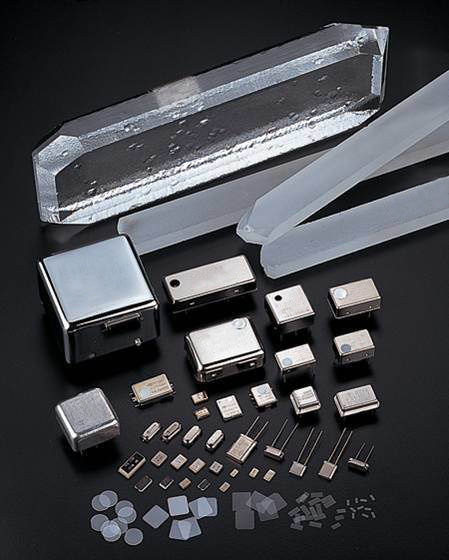
Oscillators are usually housed in metal or ceramic. They’re available in a variety of industry-standard package dimensions. The pad (pin) arrangements may vary among vendors, but the overall dimensions are standardized. Here’s a list of common oscillator package sizes for single-ended oscillators, which usually have 4 pins. Differential oscillators, which have 6 pins, are typically available in the larger packages: 3225, 5032, and 7050.
振荡器通常采用金属或陶瓷封装。它们有多种行业标准封装尺寸可供选择。焊盘(引脚)排列可能因供应商而异,但整体尺寸是标准化的。下面列出了单端振荡器的常见振荡器封装尺寸,通常有 4 个引脚。差分振荡器具有 6 个引脚,通常采用较大的封装:3225、5032 和 7050。
- 2016: 2.0 x 1.6 mm
- 2520: 2.5 x 2.0 mm
- 3225: 3.2 x 2.5 mm
- 5032: 5.0 x 3.2 mm
- 7050: 7.0 x 5.0 mm
Some specialized oscillators, such as OCXOs are housed in significantly larger packages, often measuring 25.4 x 25.4 mm but can range from 9.7 x 7.5 mm to 135 x 72 mm.
一些专用振荡器(如 OCXO恒温晶体振荡器)封装在大得多的封装中,通常尺寸为 25.4 x 25.4 mm,但尺寸范围为 9.7 x 7.5 mm 至 135 x 72 mm。
- 2016: 2.0 x 1.6 mm
- 2520:2.5 x 2.0 mm
- 3225:3.2 x 2.5 mm
- 5032: 5.0 x 3.2 mm
- 7050:7.0 x 5.0 mm
 Jitter抖动
Jitter抖动
Jitter is an important parameter, especially for digital communications applications. It is the short-term deviation from an ideal clock signal and is measured in picoseconds (ps) or nanoseconds (ns). Because jitter can be one of the main contributors to system timing errors, it’s critical to account for oscillator jitter when evaluating the total timing budget.T
抖动是一个重要的电气参数,特别是对于数字通信应用。它是与理想时钟信号的瞬时偏差,以皮秒 (ps) 或纳秒 (ns) 为单位。由于抖动可能是导致系统时序误差的主要原因之一,因此在评估总时序预算时考虑振荡器抖动至关重要。
Other Parameters其他参数
The eight parameters listed above are the most common factors used when selecting an oscillator. But depending on the application, there can be many more characteristics and features that are important to consider. These include EMI reduction features, pull range options for fine-tuning frequency, start-up time, etc.
上面列出的八个参数是选择振荡器时最常用的因素。但根据应用的不同,可能还有更多重要的特性和功能需要考虑。其中包括 EMI降低、频率拉伸、启动时间等。



